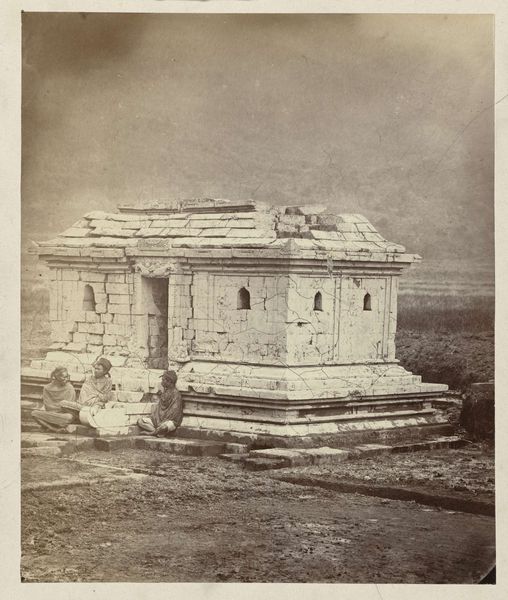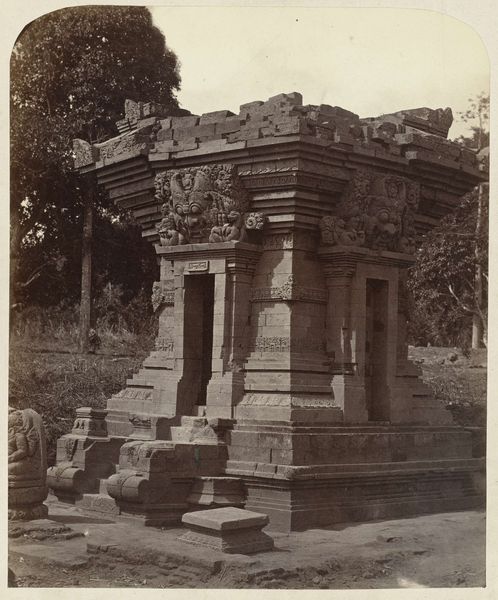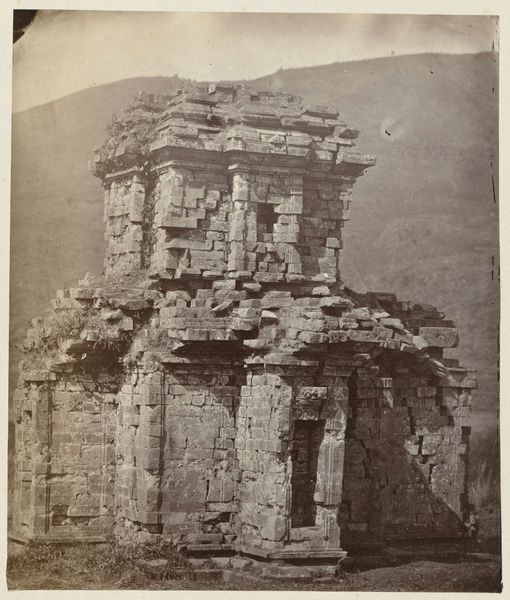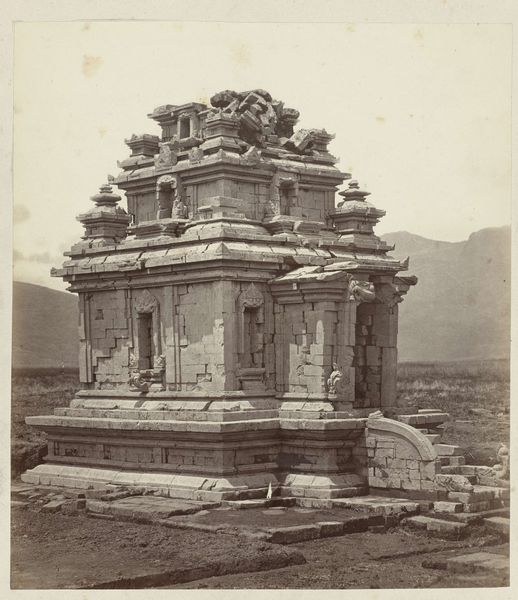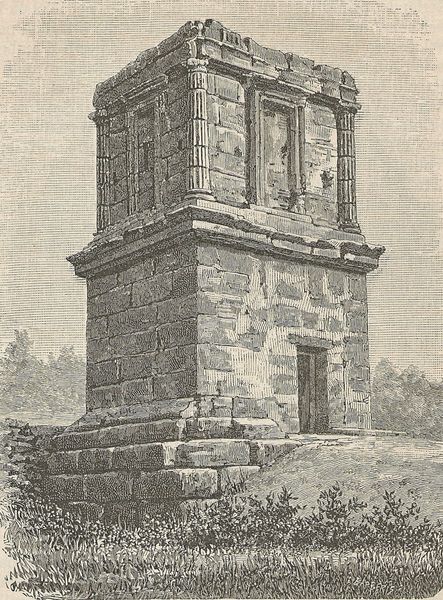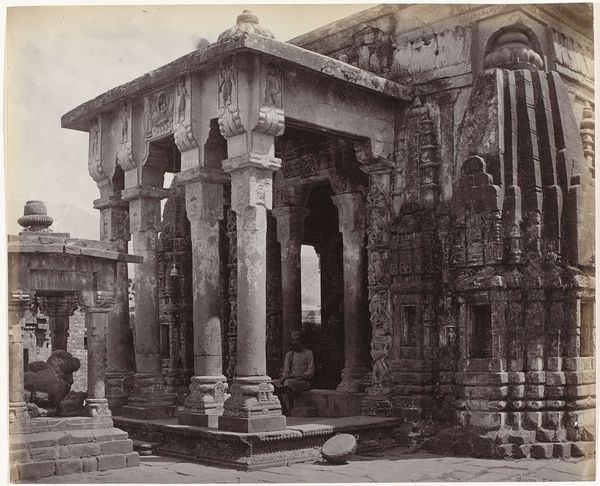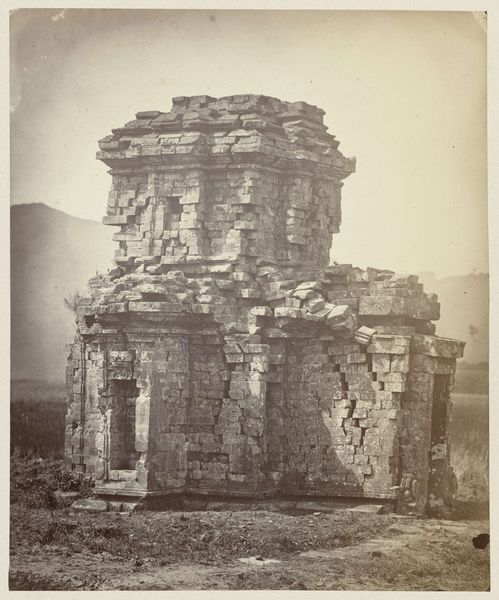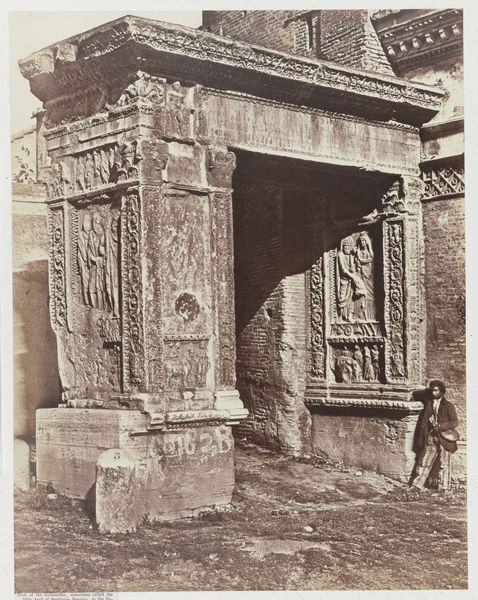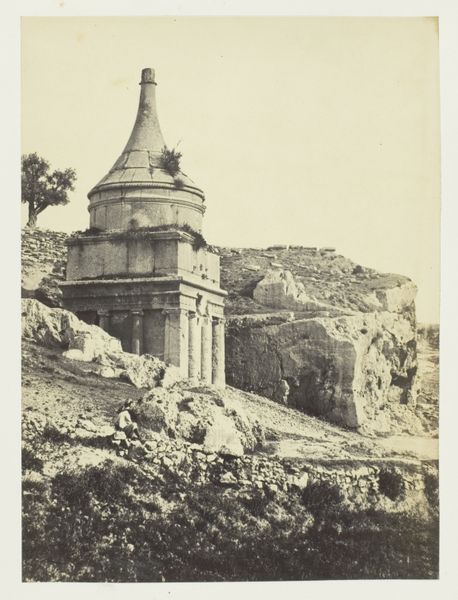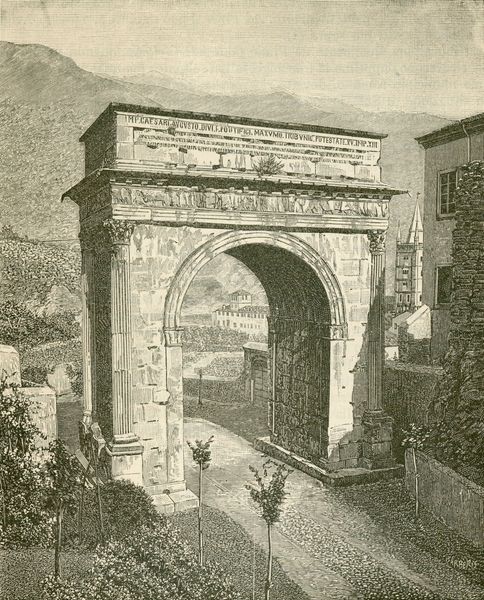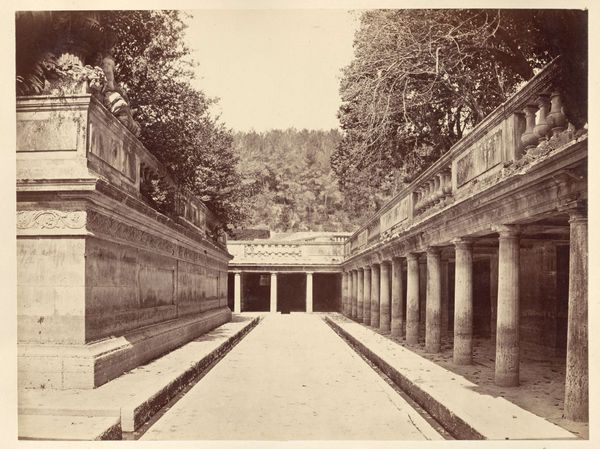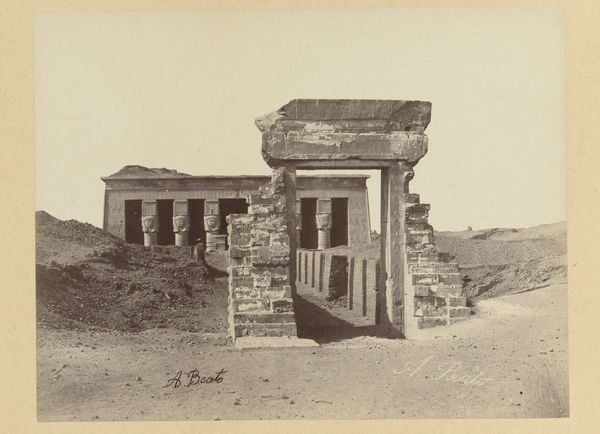
contact-print, photography, albumen-print
#
landscape
#
contact-print
#
photography
#
ancient-mediterranean
#
orientalism
#
islamic-art
#
albumen-print
Dimensions: height 240 mm, width 290 mm, height 350 mm, width 400 mm
Copyright: Rijks Museum: Open Domain
Samuel Bourne made this photograph of a temple near Buniyar, India, in the 19th century using the wet collodion process. Bourne was one of many European photographers who traveled through the British Empire, documenting its people, architecture and landscapes. But while his images appear to simply record what was in front of his lens, the history of photography in the British Empire reveals it as a tool for shaping and reinforcing colonial power. Photography created a sense of objective knowledge, but it also exoticized the people and places being photographed. The photographer held power in deciding what to show, and how to show it, which in turn, reinforced Britain’s imperial authority and influence. Understanding Bourne’s work requires us to consider the power dynamics that shaped the production and consumption of these images. Research into Bourne's company and its distribution networks helps us understand the complex relationship between art, commerce, and colonial power.
Comments
No comments
Be the first to comment and join the conversation on the ultimate creative platform.

